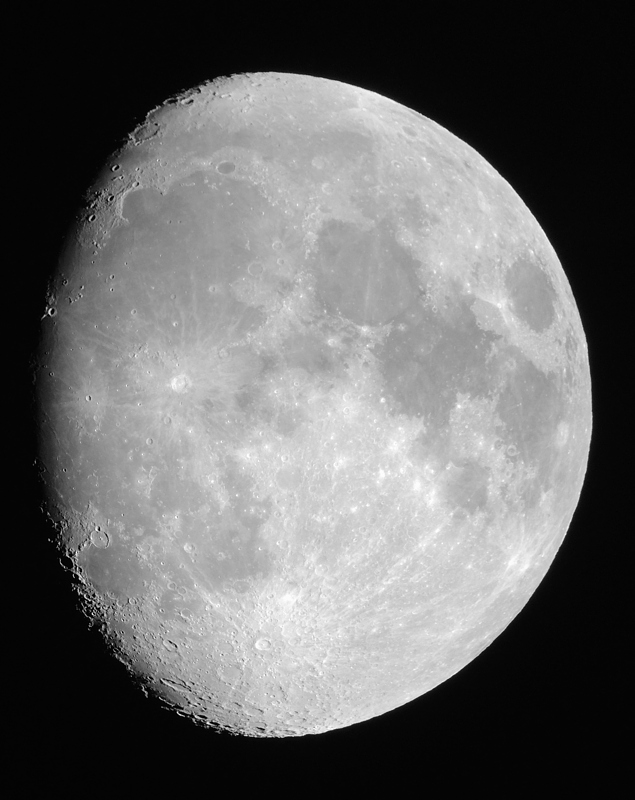
Jupiter Galilean Moons, Lunar Crater J. Herschel,
the Sun's Long-Lost Brother
Posted: 11 May 2014
|
Opened: Saturday, 10 May 2014, 1904 MST Temperature: 82°F |
Session: 682 Conditions: Clear but windy |
The clouds of the previous two nights were gone, although strong winds had returned on Saturday, 10 May, adding some dust to the air. I delayed opening the dome a few minutes due to the strong winds. SYNCed the observatory clock to WWV.
1916 MST: sunset. Opened the dome and powered on the 8" LX200-ACF telescope. 1919 MST: viewed Mercury, low in the west, 83X, 222X, and 444X. It was too low for good viewing, but the gibbous phase was visible.
Slewed to Jupiter and viewed it at 444X. The four Galilean Moons were visible in the eyepiece field-of-view. Using the iPhone 5s, I captured this handheld afocal photo of Jupiter (overexposed) and the four moons, 444X, cropped:

Unfortunately, the wind was still too strong to try any imaging for details on Jupiter.
1933 MST: viewed Mars, 444X. No surface dark areas were visible but the North Polar Cap was easily seen. Seeing was not very good (wind).
Mars was near the waxing gibbous moon. Took this D7000 DSLR composite photo, cropped, at 1936 MST, f/5.6, 1/30sec (Mars, left) and 1/320sec (moon, right), 105mm, ISO 400:

1939 MST: began doing some lunar observing, 444X. There were some nice views along the terminator. Took these handheld iPhone 5s afocal photos, 444X:
Northern Polar Region:

Southern Polar Region:

1952 MST: switched to 83X for lunar observing. Another handheld iPhone 5s afocal photo, 83X, slightly cropped:

1955 MST: still windy. Slewed back to Mars. Using 222X, some hints of dark surface areas were just visible, but not distinct enough to identify them.
2001 MST: did more lunar observing, 222X. The crater J. Herschel looked interesting. Grabbed this handheld iPhone 5s afocal photo, 444X, cropped:

Then slewed back to Mars and viewed it at 222X. No change. Still windy.
2022 MST: using High Precision, slewed to and viewed the star HD 162826, Mag. +6.6, the recently identified "Sun's Long-Lost Brother". This chart (North is to the left) from SkySafari for Mac OS X shows the location of the star in the constellation of Hercules in a typical low power eyepiece field-of-view:

The star was very obvious at 83X. Set up for D7000 DSLR prime focus imaging. Mounted the camera to the 8" telescope using a visual back. Did a focus test image on the star Arcturus using a Bahtinov Mask. Captured this image of the star HD 162826, 20 seconds, ISO 1600:

As confirmation, this chart from SkySafari for Mac OS X shows HD 6669 (same as HD 162826) at approximately the same scale and orientation:

2044 MST: ended imaging and slewed to Saturn, low in the southwest and in a tree. The view at 83X was not very good. Then slewed up to Mars, high in the sky. Viewed Mars at 83X and 222X. Still no change in what was visible. The wind was still fairly strong. Decided to close due to the wind.
|
Closed: Saturday, 10 May 2014, 2100 MST Temperature: 69°F |
|
Comments are welcome using Email. If you are on Twitter you can use the button below to tweet this report to your followers. Thanks.
Cassiopeia Observatory Home Page